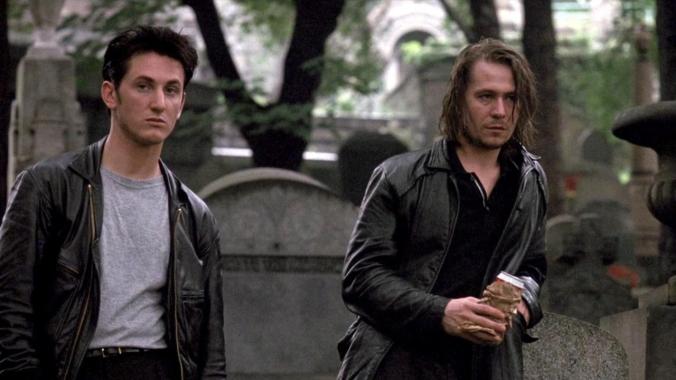Ah, the “shared cinematic universe”—the favored narrative model–cum–marketing campaign of the new millennium! Pioneered by Marvel, it wasn’t long before every studio in town wanted a “mega-franchise” of its own, feverishly ransacking its IP archives for reliable brands to exploit anew. By resurrecting the Universal Classic Monsters, Universal Studios saw an opportunity to create its own interconnected multimedia initiative… and the so-called “Dark Universe” was born.
Well, not born, exactly—more like announced. When the first offering, Dracula Untold, took a critical beating and underperformed domestically, Universal promptly issued a retraction: “Just kidding! That wasn’t really the first Dark Universe movie!” An all-star cast was hastily assembled: Russell Crowe as Jekyll and Hyde! Javier Bardem as Frankenstein’s monster! Johnny Depp as the Invisible Man! Angelina Jolie as the Bride of Frankenstein! And first up would be Tom Cruise in The Mummy…
Except—whoops!—The Mummy bombed, too… at which point the sun rather quietly went down on the Dark Universe project altogether. Seems launching a shared fictional universe is considerably harder than Marvel made it look. Imagine that.
The thing is, we already had a revival—arguably a cinematic renaissance—of the Universal Classic Monsters in the 1990s. Dracula, Frankenstein, the Mummy, the Invisible Man, the Wolf Man, and Dr. Jekyll and Mr. Hyde were given gloriously Gothic reprisals in an (unrelated) series of studio features that starred some of the biggest names in Hollywood. None of those projects were cooked up in a corporate think tank, but were instead the idiosyncratic visions of a diverse group of directors—the artists behind no less than The Godfather, The Graduate, The Crying Game, Dangerous Liaisons, and Basic Instinct, to name a few—employing horror’s most recognizable freaks to (for the most part) explore the anxiety of confronting the end of not merely a century, but a millennium.
If the respective creative efforts of these filmmakers were uncoordinated, their common agenda was entirely logical. Many of their fiendish subjects, after all, first arrived on the cultural scene at the end of the previous century: Strange Case of Dr Jekyll and Mr Hyde was published in 1886; both Dracula and The Invisible Man in 1897. Furthermore, their stories tended to speak to either the hazards of zealous scientific ambition (Frankenstein, The Invisible Man, Dr Jekyll and Mr Hyde), or, in the case of Dracula and The Mummy, the limitations of it—of humankind’s attempts to tame the natural world through technology: “And yet, unless my senses deceive me, the old centuries had, and have, powers of their own which mere ‘modernity’ cannot kill” (from Jonathan Harker’s journal, dated 15 May).
Even the Wolf Man serves as a metaphor for the primal instincts we’ve suppressed under our civilized veneer; far from having learned to let our two halves coexist in harmony, they are instead at war within the modern man and woman. These are existential issues that seem to weigh more heavily on us at the eve of a new epoch, which is arguably why the monstrous creations we use to examine them flourished in the literature of the 1890s and then again, a century later, through the cinema of the 1990s. It goes to illustrate that sometimes fictional characters simply speak to their times in a very profound way that can’t be engineered or anticipated. It’s just alchemical, much as Hollywood would prefer it to be mathematical.
With that in mind, let’s have a look at the unofficial “Universal Classic Monsters reprisal” of the nineties (and I’ve included a few other likeminded films from the movement) to better appreciate what worked and what sometimes didn’t.
Continue reading

Recent Comments